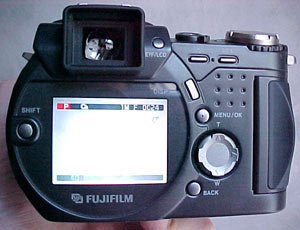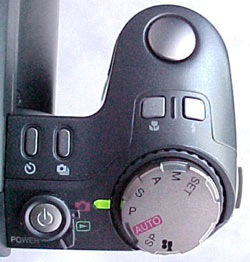Sample Images
Naturally the best way to get a feel for a camera is to
take it for a test drive and see what it can produce. We snapped a few images at
some of the more common resolution settings to better show you what to expect
from the FinePix 6900. Note that all images were shot at the "normal" resolution
setting with the camera on automatic. Additionally, since the FinePix 6900 is
able to capture low-resolution movies, we added a short 9-second panorama
shot (it can record longer times of
course).
The thumbnails of the images are shown below, so simply click on a
picture and see for yourself. The images are uncompressed and in their natural
state so file sizes may be a bit large.
 |
 |
 |
 |
640x480
72KB |
1280x960
588KB |
2048x1536
1.25MB |
2832x2128
1.06MB |
 |
 |
|
|
2832x2128 +6XZoom
1.0MB |
9sec AVI filmclip
1.3MB |
|
|
Real world impressions
Now that we have gotten a plethora of specs, features and
insights out of the way its time to examine some things
we noticed while using this camera.
We found the lens to be a bit finicky while it focuses.
Depending on the settings, and object you are attempting to photograph, the
camera when set to auto focus will take anywhere from a second or so
to focus properly. As the camera focuses it makes an audible sound, letting the user know when the
process is complete. If the environment is too dark, or the subject too close a small
indicator will inform you that the Auto Focus has been unable to
properly adjust under the current conditions.

Even with the macro feature enabled, this is not a camera for really
intensive macro work. It will be sufficient for most casual users intent on
capturing local flowers and such, but for really close up work it is not well
equipped.
Getting used to how the electrical focus ring operated took some time for us. Where a
traditional camera will only rotated for 360 degrees say, the focus ring on
digital camera like the 6900Z will rotate endlessly (after some point it stops
doing anything).

The rear LCD display is inherently brighter than the
actual image so it is important to adjust the brightness of the display to more
correctly represent the intensity of the image. On more than one occasion we
found ourselves taking pictures which appeared to be sufficiently bright, but
when transferred to the computer were too dark. From what we've seen previously,
this is a
major falling point with all digital cameras that used
LCD-based viewfinders - the brightness of the final image and that of the viewfinder should
always be adjusted by the user to better relate to one another. Without
that step the photographer either has the option of haphazardly under
lighting the LCD, or getting to know their camera very well, realizing that
images which appear washed out may in fact
be just right on the computer.

The electrical viewfinder is a nice addition, and one which will afford a
slight gain in battery life over the bigger counter part, but we found using it
to be a bit odd as the image appeared grainy. FujiFillm should be commended on
the excellent quality of the viewfinder optics however. The LCD display was
presented clearly and without any optical distortion. Our only wish was that a
smaller dot-pitch was used for the LCD panel in the viewfinder.

The main controls on the 6900Z are well laid out, and
not nearly as cluttered as the rear of the display. Of all the controls on the
camera this area was best represented. There was nothing superfluous or
unnecessary located here. The shutter release was well tensioned and sensitive
enough that it didn't cause the entire camera to jerk when it was depressed. The
Mode wheel is easy to operate and a very intuitive way to alter the
settings of the camera - with just a slight movement of the thumb. The outer rim
around the wheel can be used to change the f-stop when not on automatic
settings, although I would have preferred it only
travel one revolution instead of continuously.

Using the zoom button on the side of the camera was a bit awkward, and I
would have liked to have seen a more integrated zoom button operable by the
thumb. While there is a button on the rear of the camera that will allow the
photographer to adjust the zoom settings, it is really located too far down on
the body to be used while siting the camera with one hand.
